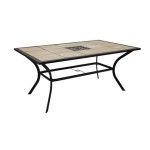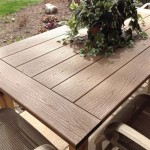Cover Concrete Patio With Pavers: A Comprehensive Guide
Transforming your ordinary concrete patio into an elegant and durable outdoor living space is a worthwhile endeavor. Covering your patio with pavers is a popular and effective way to achieve this. Pavers offer a vast array of design possibilities, enhance durability, and provide a low-maintenance solution. This article explores the essential aspects of covering a concrete patio with pavers, providing you with a comprehensive guide to embark on this project confidently.
Planning and Preparation
Before embarking on this endeavor, meticulous planning is crucial. Start by drafting a design that incorporates the desired paver pattern, color scheme, and any additional features such as borders or accents. Accurately measure the patio area to determine the quantity of pavers needed. Once your design and measurements are finalized, it's time to prepare the concrete surface. This involves cleaning the surface thoroughly to remove any dirt, debris, or loose concrete. Any cracks or imperfections in the concrete should be repaired beforehand to ensure a solid foundation for the pavers.
Laying the Base
A stable base is essential for the longevity of your paver patio. Begin by spreading a layer of crushed gravel or road base material over the prepared concrete surface. Compact this layer thoroughly using a tamper or plate compactor to create a firm and level base. Over the compacted gravel, install a layer of sand or polymeric sand, which will serve as a bedding layer for the pavers. Level and compact the sand to achieve a smooth and even surface.
Installing the Pavers
With the base in place, you can now begin installing the pavers. Start from one corner and work your way across, following the predetermined pattern. Carefully set each paver into the sand, ensuring it is level and flush with the surrounding pavers. Use a rubber mallet to tap the pavers into place, taking care not to damage them. Continue this process until the entire patio is covered.
Jointing and Sealing
Once the pavers are installed, the joints between them need to be filled to prevent movement and the growth of weeds. Sweep a polymeric sand into the joints, ensuring it penetrates deeply. The polymeric sand will harden over time, creating a solid and flexible bond between the pavers. To provide additional protection and enhance the appearance of the patio, apply a sealer specifically designed for pavers. The sealer will protect the pavers from stains, fading, and moisture penetration, extending their lifespan.
Finishing Touches
To complete the project, add any desired borders or accents to enhance the overall design. These elements can be made of different materials such as bricks, stones, or metal, and should complement the style and color scheme of the pavers. Additionally, consider installing lighting fixtures to illuminate the patio for evening gatherings. With these finishing touches in place, your newly transformed paver patio is ready to be enjoyed for years to come.

How To Install Patio Pavers Over An Existing Concrete Slab

How To Cover A Concrete Patio With Pavers Diy Family Handyman

How To Cover A Concrete Patio With Pavers Diy Family Handyman

Concrete Patio Expanded With Pavers Flagstones Http Slickdeals Designs Blocks

Xenia Paver Patio Extension Stones Concrete

Patio Paver Vs Stamped Concrete Which Is Best Hively Landscapes

Should I Add A Concrete Or Brick Paver Patio Designer Landscapes

Diy Concrete Patio In 8 Easy Steps How To Pour A Cement Slab

How To Build A Paver Patio It S Done Young House Love

Advantages And Disadvantages Of Both Patio Pavers Stamped Concrete








